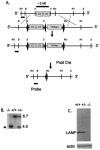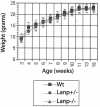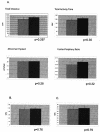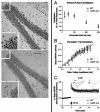Generation and characterization of LANP/pp32 null mice
- PMID: 15060138
- PMCID: PMC381670
- DOI: 10.1128/MCB.24.8.3140-3149.2004
Generation and characterization of LANP/pp32 null mice
Abstract
The leucine-rich acidic nuclear protein (LANP) belongs to a family of evolutionarily conserved proteins that are characterized by an amino-terminal domain rich in leucine residues followed by a carboxy-terminal acidic tail. LANP has been implicated in the regulation of a variety of cellular processes including RNA transport, transcription, apoptosis, vesicular trafficking, and intracellular signaling. Abundantly expressed in the developing cerebellum, this protein has also been hypothesized to play a role in cerebellar morphogenesis. LANP has been implicated in disease biology as well, both as a mediator of toxicity in spinocerebellar ataxia type 1 and as a tumor suppressor in cancers of the breast and prostate. To better understand the function of this multifaceted protein, we have generated mice lacking LANP. Surprisingly, these mice are viable and fertile. In addition we could not discern any derangements in any of the major organ systems, including the nervous system, which we have studied in detail. Overall our results point to a functional redundancy of LANP's function, most likely provided by its closely related family members.
Figures









References
-
- Adachi, Y., G. N. Pavlakis, and T. D. Copeland. 1994. Identification and characterization of SET, a nuclear phosphoprotein encoded by the translocation break point in acute undifferentiated leukemia. J. Biol. Chem. 269:2258-2262. - PubMed
-
- Bai, J., J. R. Brody, S. S. Kadkol, and G. R. Pasternack. 2001. Tumor suppression and potentiation by manipulation of pp32 expression. Oncogene 20:2153-2160. - PubMed
-
- Burright, E. N., J. D. Davidson, L. A. Duvick, B. Koshy, H. Y. Zoghbi, and H. T. Orr. 1997. Identification of a self-association region within the SCA1 gene product, ataxin-1. Hum. Mol. Genet. 6:513-518. - PubMed
Publication types
MeSH terms
Substances
Grants and funding
LinkOut - more resources
Full Text Sources
Other Literature Sources
Molecular Biology Databases
Miscellaneous
